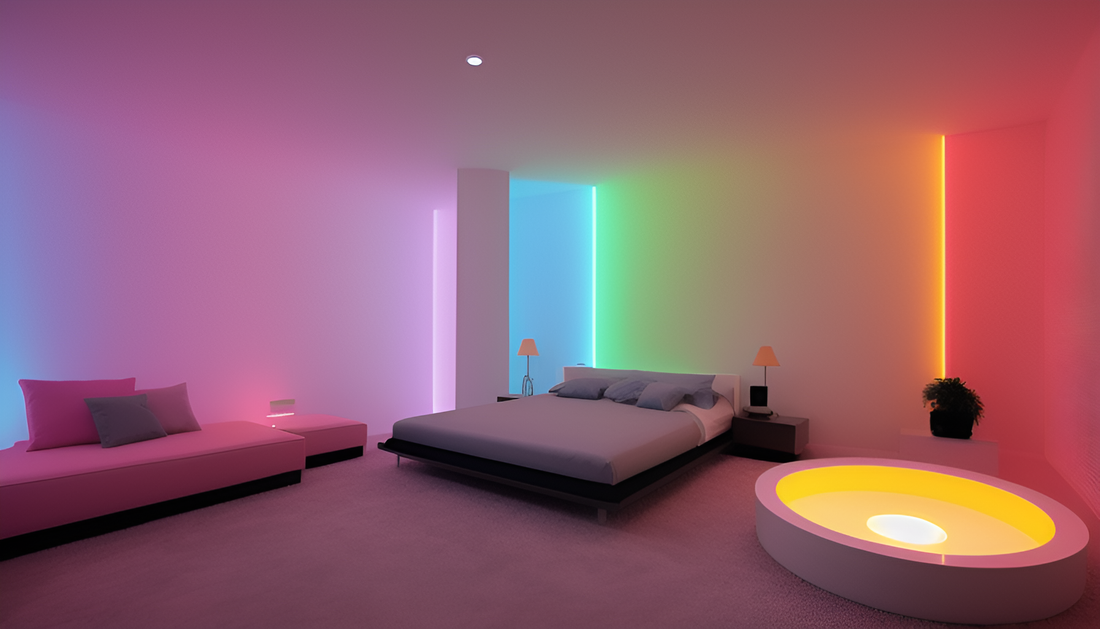Lighting plays a crucial role in shaping the ambiance and mood of a space. It has the power to influence our emotions, productivity, and overall well-being. One often overlooked aspect of lighting design is color temperature, which refers to the warmth or coolness of light emitted by a bulb. Understanding how to use different color temperatures can transform your living and working spaces into inviting and functional areas. In this blog post, we will explore the significance of color temperature and how to utilize it effectively in various settings.
1. The Basics of Color Temperature:
Color temperature is measured in Kelvin (K) and typically falls into three categories: Warm White (2700K-3500K), Neutral White (3500K-5000K), and Cool White (5000K-6500K). Lower Kelvin values produce warm, yellowish light, reminiscent of candlelight, while higher values emit cooler, bluish light akin to daylight.
2. Warm White (2700K-3500K):
Perfect for Relaxation and Comfort: Warm white lighting is ideal for spaces where relaxation and comfort are paramount, such as bedrooms, living rooms, and dining areas. The soft, cozy glow creates a welcoming atmosphere, promoting rest and intimacy.
Accentuating Natural Materials: In spaces with wooden furniture, exposed brick, or warm-colored walls, warm white lighting complements and enhances these natural materials, providing an inviting and homely vibe.
3. Neutral White (3500K-5000K):
Balanced Illumination for Productivity: Neutral white lighting strikes a balance between warm and cool tones, making it suitable for workspaces, offices, and kitchens. It promotes focus and concentration, making it easier to read, study, or engage in detailed tasks.
Showcasing Artwork: When displaying artwork or decorative pieces, neutral white light helps reveal accurate colors and textures, allowing the artwork to shine without distortion.
4. Cool White (5000K-6500K):
Enhancing Task Performance: Cool white lighting mimics natural daylight, making it ideal for areas where precise tasks are performed, such as workshops, garages, and study rooms. It boosts alertness and can help improve productivity and performance.
Brightening Small Spaces: Using cool white lighting in smaller rooms can create an illusion of more space by making the room feel brighter and airier.
5. Combining Color Temperatures:
Don't be afraid to mix and match different color temperatures within your home or workspace. For instance, consider using warm white lights in the living room for a relaxing ambiance, while opting for neutral white lights in the adjacent study corner to facilitate work.
6. Consider Dimmers and Smart Lighting:
To further enhance the versatility of your lighting, incorporate dimmers and smart lighting systems. Dimmers allow you to adjust the intensity of the light, while smart lighting enables you to change color temperatures remotely through mobile apps or voice commands, catering to different moods and activities.
Conclusion:
Understanding and utilizing different color temperatures can significantly impact the overall atmosphere and functionality of various spaces. By selecting the appropriate color temperature for each room, you can create an environment that complements its purpose, fosters well-being, and enhances your daily experiences. So, next time you embark on a lighting project, remember to choose wisely and let the colors set the mood!
We hope this guide has been helpful in shedding light (pun intended) on the importance of using different color temperature lights for different spaces.

